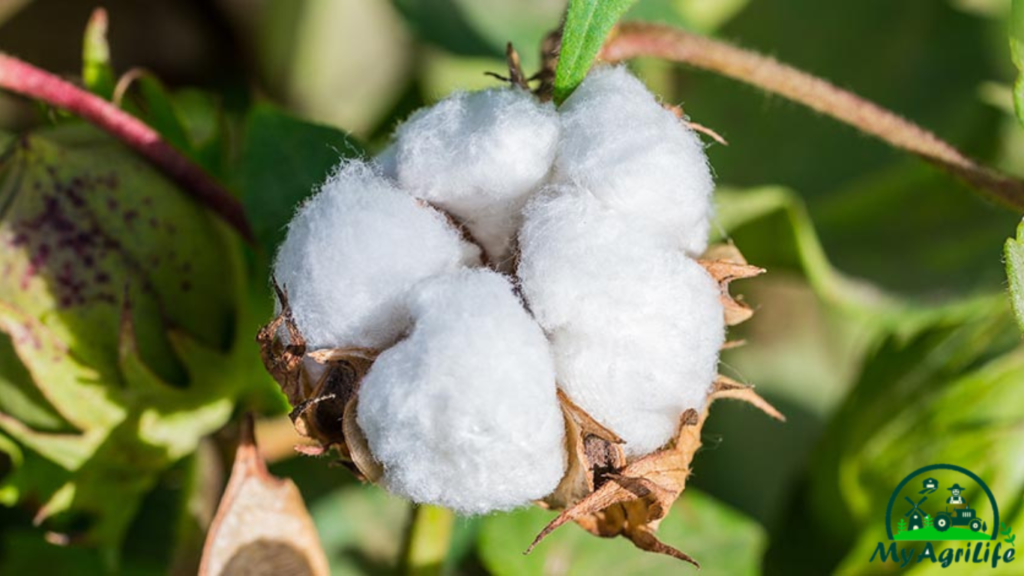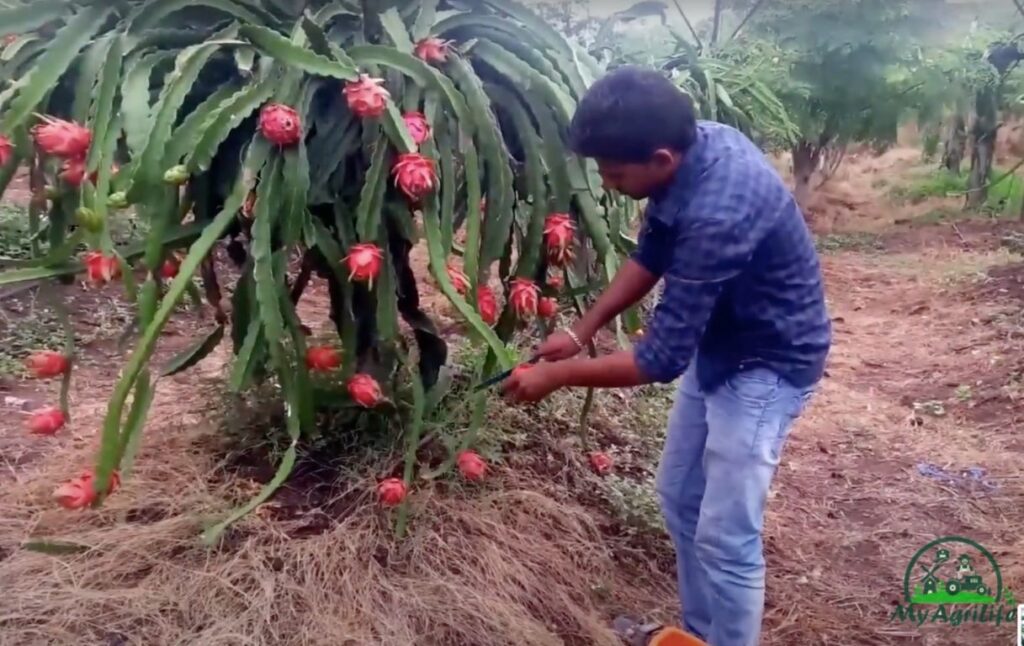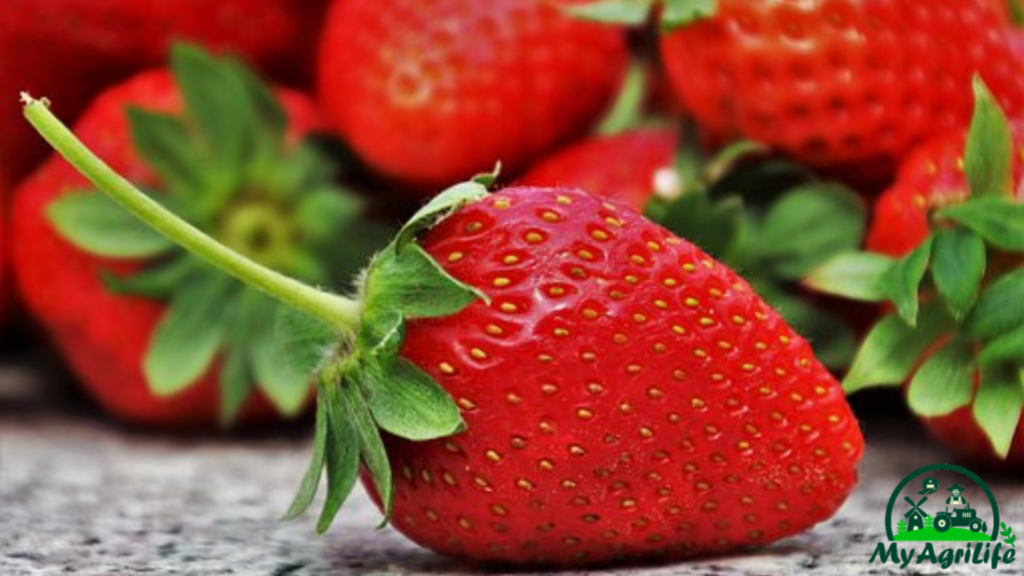
Strawberry is a fruit that belongs to the genus Fragaria of the Rosaceae family. It is a small, juicy, and fragrant fruit that is widely popular around the world for its sweet and tart flavor.
The strawberry plant is a low-growing perennial herb that grows in temperate regions around the world. The fruit is typically red in color, although some varieties may be yellow, green, or white. The fruit is covered with tiny seeds on the surface and has a small, green stem on top.
Strawberries are a good source of vitamin C, folate, and potassium. They are also high in antioxidants and fiber, making them a healthy addition to any diet. Strawberries can be eaten raw or used in a variety of dishes, such as salads, smoothies, jams, cakes, and pies. They are also commonly used in the production of desserts and confectionery.
In India, strawberries are grown mainly in the hilly regions of Himachal Pradesh, Jammu & Kashmir, and Uttarakhand. They are usually in season from December to March, and are available fresh in local markets and supermarkets.
Seed Specification Strawberry

The seed specification of strawberries (स्ट्रॉबेरी) can vary depending on the variety and the seed producer. However, generally, strawberry seeds are small, oblong, and covered in a hard, outer coating called the seed coat. The seed coat helps protect the embryo inside the seed from damage and dehydration.
The germination rate of strawberry seeds can vary widely depending on the seed quality and environmental conditions. Strawberry seeds generally require a period of cold stratification, which means exposing them to cold temperatures for a certain period of time to break dormancy and trigger germination.
When planting strawberry seeds, it is important to use well-draining soil and keep the soil moist but not waterlogged. Strawberry plants prefer a slightly acidic soil with a pH between 5.5 and 6.5. It is also recommended to plant strawberry seeds in a location that receives at least six hours of sunlight per day.
Some strawberry varieties are propagated through runners, which are long, thin stems that grow from the parent plant and produce new plants at their tips. These runners can be rooted and planted to produce new strawberry plants. This method of propagation is often preferred over seed propagation because it produces genetically identical plants that are more likely to have desirable traits.
Land Preparation & Soil Health Strawberry
Land preparation and soil health are important factors to consider when growing strawberries (स्ट्रॉबेरी). Here are some guidelines to follow:
Land preparation:
1.Choose a well-drained site that receives full sun. Strawberry plants prefer a slightly acidic soil with a pH between 5.5 and 6.5.
2.Clear the area of any weeds, rocks, or debris.
3.Till the soil to a depth of 8-10 inches to break up any compacted soil.
4.Incorporate organic matter such as compost, well-rotted manure, or peat moss into the soil to improve soil fertility and water-holding capacity.
5.Rake the soil to create a smooth and level planting bed.
Soil health:
1.Conduct a soil test to determine the soil pH and nutrient levels. Based on the results of the soil test, apply any necessary soil amendments such as lime or sulfur to adjust the pH and fertilizer to correct any nutrient deficiencies.
2.Maintain soil moisture levels by watering the plants regularly. Irrigate the plants deeply but infrequently to encourage deep root growth and prevent waterlogged soil.
3.Mulch the soil with a layer of organic material such as straw, leaves, or wood chips to help retain moisture, suppress weed growth, and maintain soil temperature.
4.Rotate the crop every few years to prevent soil-borne diseases and pests.
Avoid using synthetic pesticides and fertilizers that can harm soil microorganisms and disrupt the soil ecosystem. Instead, use organic methods such as crop rotation, cover cropping, and composting to maintain soil health.
Crop Spray & Fertilizer Specification Strawberry
Crop spray and fertilizer specifications for strawberries (स्ट्रॉबेरी) can vary depending on the specific needs of the crop, the soil conditions, and the stage of growth. Here are some general guidelines:
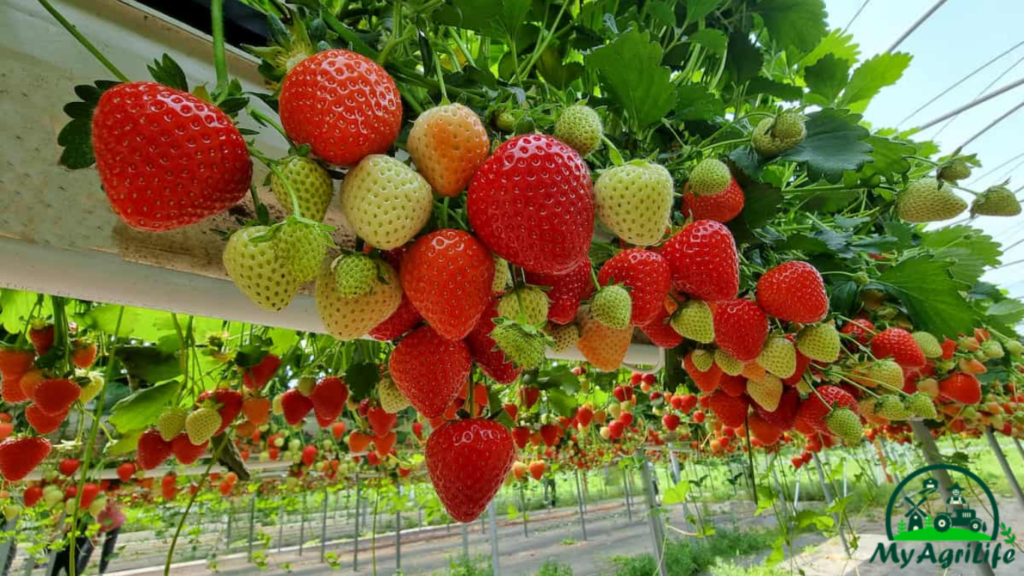
Crop Spray:
1.Before planting, spray the soil with a pre-emergent herbicide to control weeds.
2.Apply insecticides and fungicides as needed to control pests and diseases. Use a recommended spray schedule to ensure timely applications.
Apply foliar nutrients as needed to correct nutrient deficiencies or promote plant growth. Foliar sprays can be used to provide a quick boost of nutrients to the plants, but should not be used as a replacement for soil fertilization.
Fertilizer Specification:
1.Conduct a soil test before planting to determine the nutrient levels and pH of the soil. Based on the results of the soil test, apply any necessary soil amendments such as lime or sulfur to adjust the pH and fertilizer to correct any nutrient deficiencies.
2.Apply a balanced fertilizer such as 10-10-10 or 14-14-14 at a rate of 1-2 pounds per 100 square feet of planting area at planting time.
3.After planting, apply a side dressing of fertilizer every 4-6 weeks during the growing season. Use a nitrogen-rich fertilizer such as urea or ammonium nitrate, or a balanced fertilizer such as 10-10-10 or 14-14-14.
4.Use organic fertilizers such as compost, well-rotted manure, or fish emulsion to supplement soil nutrients and improve soil health. Apply organic fertilizers at a rate of 2-3 pounds per 100 square feet of planting area.
Avoid over-fertilization, which can lead to excessive vegetative growth, reduced fruit quality, and environmental pollution. Follow recommended fertilizer rates and schedules and avoid applying fertilizer during drought or waterlogged conditions.
Weeding & Irrigation Strawberry
Weeding and irrigation are important aspects of growing strawberries (स्ट्रॉबेरी). Here are some guidelines for weeding and irrigation:
Weeding:
1.Remove weeds by hand or with a hoe to prevent competition for water, nutrients, and sunlight. Be careful not to damage the shallow roots of the strawberry plants.
2.Mulch the soil with a layer of organic material such as straw, leaves, or wood chips to help suppress weed growth and retain soil moisture. Reapply mulch as needed throughout the growing season.
Irrigation:
1.Strawberries require regular and consistent irrigation to maintain soil moisture levels. Irrigate the plants deeply but infrequently to encourage deep root growth and prevent waterlogged soil.
2.Water the plants early in the day to minimize evaporation and prevent foliage from staying wet overnight, which can promote disease.
3.Use drip irrigation or soaker hoses to deliver water directly to the plant roots and reduce water loss through evaporation.
4.Monitor soil moisture levels regularly by digging down 3-4 inches into the soil. If the soil feels dry, it is time to water.
Avoid overwatering, which can lead to waterlogged soil and root rot. Also, avoid watering the foliage to prevent foliar diseases.
Harvesting & Storage Strawberry
Harvesting and storage are important steps in ensuring the quality and shelf life of strawberries (स्ट्रॉबेरी). Here are some guidelines for harvesting and storage:
Harvesting:
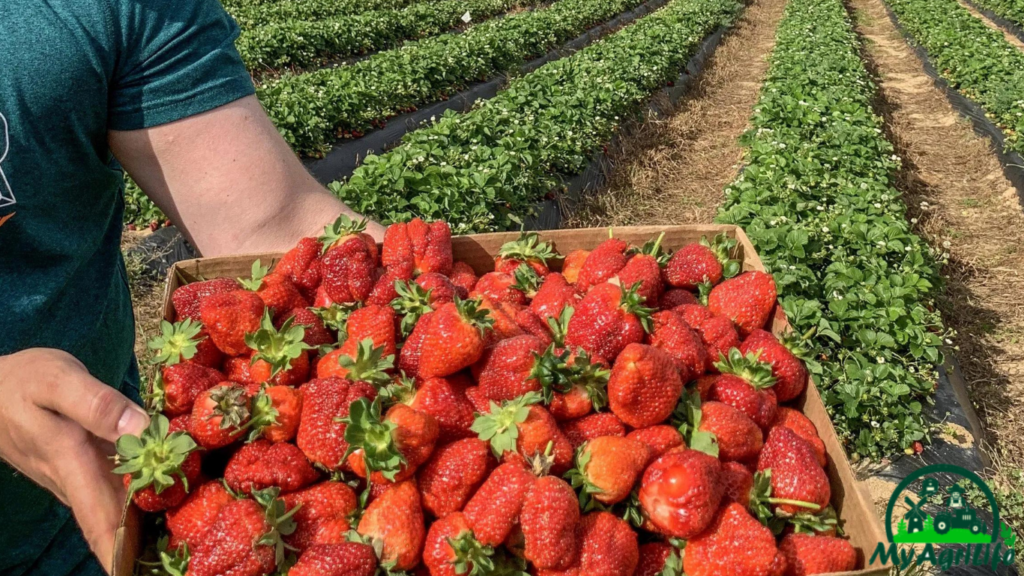
1.Harvest strawberries when they are fully ripe but still firm. Ripe strawberries are bright red and have a glossy sheen.
2.Use a sharp knife or scissors to cut the stem of the strawberry just above the fruit.
3.Handle the berries gently to avoid bruising or damaging the fruit.
Harvest strawberries frequently, usually every two to three days during peak season, to prevent over-ripening or spoilage on the plant.
Storage:
1.Store strawberries in a cool, dry place immediately after harvesting. Do not wash the berries until just before use.
2.Store strawberries in a single layer in a shallow container lined with paper towels to absorb excess moisture.
3.Cover the container with a lid or plastic wrap and store in the refrigerator at a temperature between 32°F and 40°F.
4.Use the strawberries within 3-5 days for best quality and flavor.
Freeze extra strawberries for longer storage by washing and slicing the berries and placing them in a single layer on a baking sheet. Freeze the berries for a few hours until firm, then transfer them to a freezer-safe container or bag and store in the freezer for up to 6 months.
Conclusion
In conclusion, strawberry farming can be a lucrative and rewarding venture when done properly. It requires careful planning, preparation, and attention to detail to ensure a healthy crop. Adequate soil preparation, proper irrigation and weeding, and timely pest and disease control are essential for a successful harvest. With the right conditions and management practices, strawberry farming can provide a steady source of income and contribute to the local economy.








